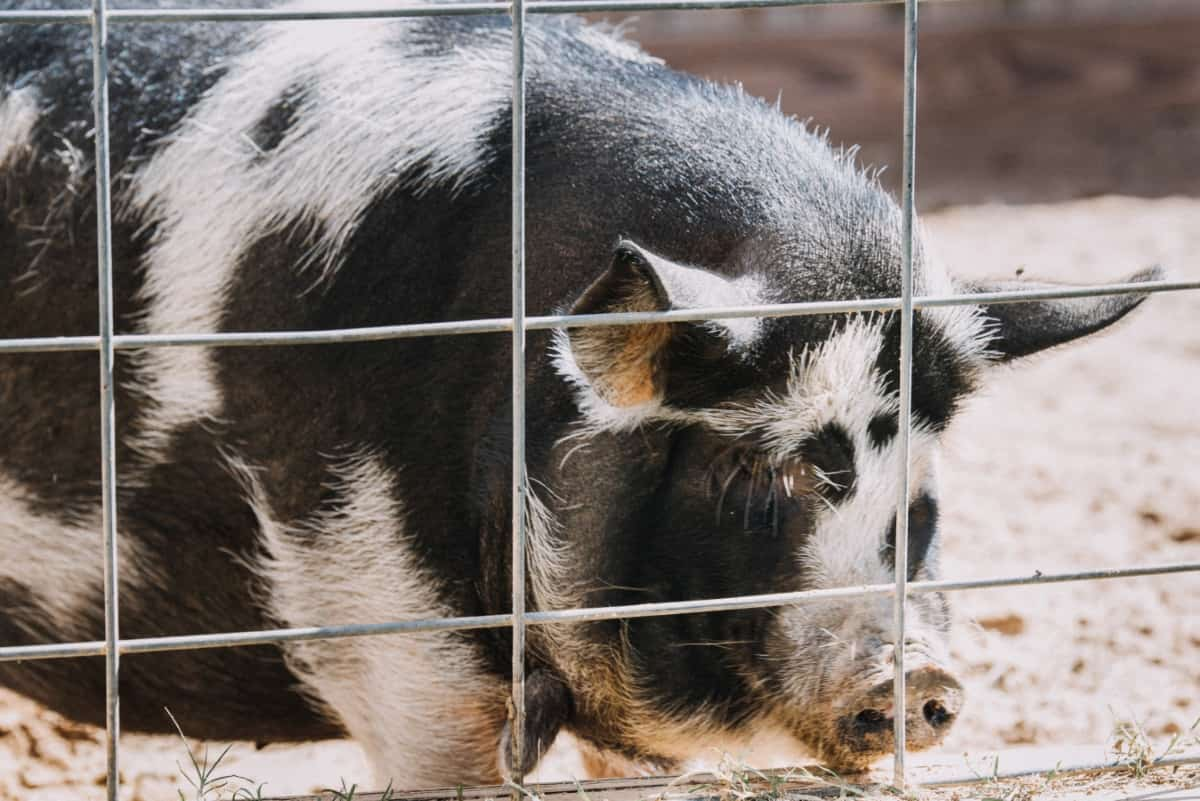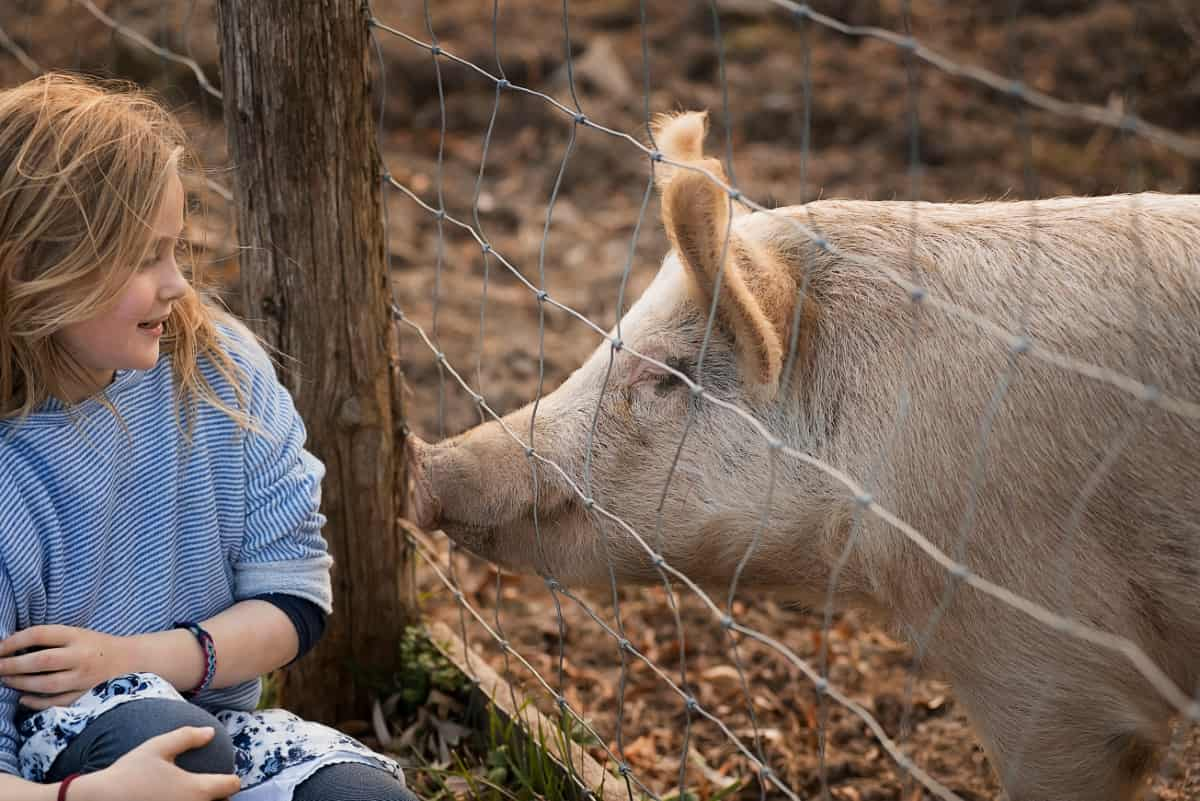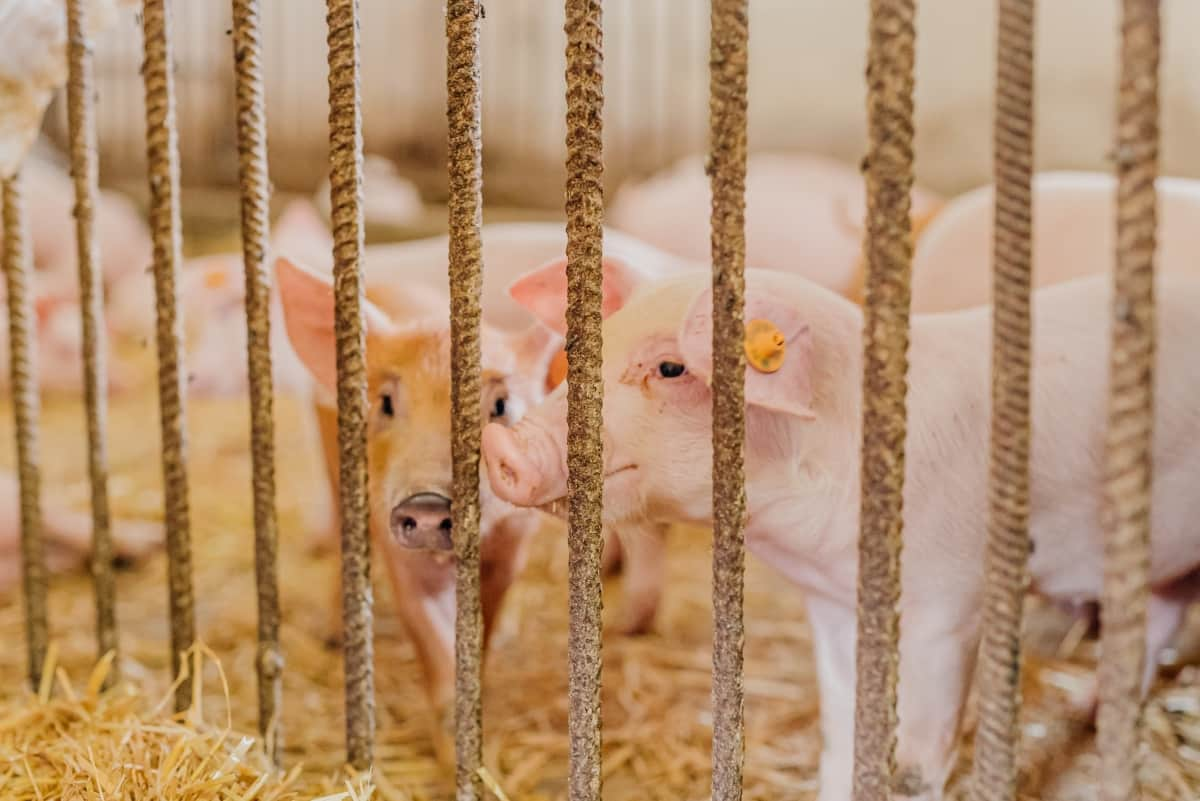Pig fencing is a crucial aspect of swine management, ensuring the safety and containment of pigs within a designated area. Understanding the basics of pig fencing involves recognizing the need for durable, secure barriers that can withstand the intelligence and physicality of pigs. Affordable pig fencing, including DIY pig fence ideas and cost-effective pig enclosures, allows farmers and homesteaders to provide safe boundaries for their pigs without breaking the bank.
From budget-friendly pig barriers to low-cost pig fencing options, there are numerous ways to achieve secure yet cheap pig fences that cater to the unique needs of pig rearing, including considerations for different pig breeds and the specific requirements of small farms.
Understanding the Basics of Pig Fencing
Pig fencing is essential for containing pigs safely within a designated area, requiring strong, durable materials that can withstand pigs’ intelligence and physical strength. Affordable pig fencing options include DIY solutions and low-cost materials, ensuring effective containment without significant financial investment.
Importance of Secure Fencing for Pigs
Secure fencing for pigs is crucial to protect them from external dangers and prevent them from straying, which could lead to damage or loss. Effective pig barriers, tailored to the specific needs of pig breeds and farm sizes, are vital for the well-being of pigs and the peace of mind of the farmer.

Cheap Pig Fencing Ideas
Assessing Your Needs
Determining the Size of the Enclosure
Before building a pig fence, it’s essential to determine the size of the enclosure based on the number of pigs, their size, and the available land. This ensures that pigs have enough space for exercise, foraging, and resting, contributing to their overall well-being. The size of the enclosure directly impacts the materials and the extent of the fencing required, making this an important first step in planning your pig fencing project.
Considerations for Different Pig Breeds
Different pig breeds have varying sizes, behaviors, and fencing needs. Larger breeds may require sturdier fencing materials, while smaller breeds might be contained with less robust solutions. Understanding your pig breed’s specific characteristics and tendencies, such as their propensity to dig or challenge barriers, is crucial in designing an effective fencing solution that meets these needs while remaining budget-conscious.
Planning Your Budget
Estimating Costs
Estimating the costs involved in pig fencing is critical for budget planning. Costs can vary widely based on the enclosure size, the materials chosen, and whether you opt for a DIY approach or professional installation. On average, simple wire fencing can cost as little as $1 to $2 per foot, while more durable options like electric fencing might range from $0.50 to $1.50 per foot, not including the cost of posts and installation equipment.
Tips for Saving Money on Fencing Materials
Saving money on fencing materials can be achieved through various strategies, such as purchasing materials in bulk, choosing cost-effective pig fencing options like wire mesh or electric fencing, and utilizing recycled materials for pig fences. Monitoring for sales, discounts, and second-hand items can help minimize costs while maintaining the safety and effectiveness of your pig enclosure.
DIY Fencing Solutions
Using Recycled Materials
Recycled materials for pig fences can significantly lower costs while promoting sustainability. Items such as pallets, repurposed wood, and fencing materials can be transformed creatively and effectively into effective pig barriers. This reduces waste and provides an economical pig fencing solution that aligns with sustainable farming practices.
Step-By-Step Guide to Building Your Pig Fence
Building your pig fence involves several key steps: planning the layout, gathering materials, setting posts securely in the ground, and attaching fencing material such as wire mesh or electric wire. Ensuring the fence is sufficiently high to prevent jumping and securely buried to discourage digging. Adding a gate for easy access and inspecting the fence regularly for weaknesses will help maintain the integrity of your DIY pig fence.
In case you missed it: Ultimate Guide to Juliana Pig: Raising Facts, Size, Diet, Care, and Lifespan

Natural Fencing Options
Hedging: Pros and Cons
Hedging can serve as a natural and aesthetically pleasing pig fencing option. The dense foliage provides a physical barrier and integrates well into the landscape. However, it requires time to grow to an effective height and thickness, may not deter determined pigs without an additional barrier, and needs regular maintenance to remain secure.
Using Trees and Shrubs as Living Fences
This sustainable pig fencing option confines pigs and enhances the area’s biodiversity. Selecting fast-growing, sturdy species that can withstand pig behavior is key to the success of this natural fencing method.
Electric Fencing on a Budget
How to Install a Cost-Effective Electric Fence
Installing electric pig fencing on a budget involves selecting affordable materials and installing it yourself. Basic components include a suitable energizer, conductive wires or tapes, and posts. Setting up involves grounding the energizer, running the conductive material along the posts at the correct height to deter pigs, and ensuring the system is properly powered and maintained.
Safety Measures and Maintenance Tips
Safety is paramount when using electric fencing. It’s important to ensure the voltage is appropriate for pigs and that the fence is marked to prevent accidental contact. Routine maintenance inspections are crucial to ensure the safe and efficient function of electric pig fencing. This includes monitoring vegetation growth to prevent wire grounding, ensuring consistent power supply, and conducting regular checks for wear and tear.
Portable and Temporary Fencing
Benefits of Using Portable Fences
Portable pig fencing offers flexibility in managing pastures and rotating grazing areas, contributing to soil health and reducing parasite buildup. These systems are usually easy to install and reposition, making them ideal for temporary enclosures or expanding existing areas without significant investment.
Types of Affordable Temporary Fencing
Affordable temporary fencing options for pigs include movable electric fence systems and lightweight mesh panels. These solutions provide versatility in fence layout and are particularly useful for small farms or those practicing rotational grazing, allowing for efficient use of space and resources.
Enhancing Fence Security
Adding Barriers to Prevent Digging
Pigs are notorious diggers, so adding barriers at the base of the fence, such as buried wire mesh or concrete blocks, can prevent escapes. These additions reinforce the fence’s security, ensuring pigs remain safely within their designated area without incurring significant additional costs.
Using Visual Deterrents and Physical Barriers
Visual deterrents and additional physical barriers can enhance the effectiveness of pig fencing. Brightly colored flags or streamers on electric fences can help pigs recognize the boundary. In contrast, double fencing or angled outward extensions at the top of the fence can discourage climbing or jumping.
In case you missed it: Ultimate Guide to Meishan Pig: Breed Facts, Breeding, Raising, and Care

Maintenance and Repairs
Routine Inspection and Maintenance Tips
Regularly inspecting and maintaining pig fences are crucial to ensure their longevity and effectiveness. This includes checking for and repairing any breaks or weak spots, ensuring gates function properly, and verifying the stability of posts and barriers. A proactive approach to maintenance can prevent escapes and reduce the need for costly repairs.
Quick Fixes for Common Fencing Problems
Quick fixes for common fencing problems include patching holes or breaks with spare wire or mesh, tightening loose sections, and replacing damaged posts. Keeping a supply of essential repair materials on hand can facilitate immediate repairs, minimizing the risk to your pigs and the integrity of your fencing solution.
In case you missed it: 10 Best Pig Weight Gain Supplements: Top Swine Weight Gain Formulas

Conclusion
Implementing affordable and secure pig fencing is achievable with careful planning, using recycled or natural materials, and DIY efforts, ensuring the safety and well-being of pigs while adhering to budget constraints. These cost-effective solutions provide secure enclosures and support sustainable and efficient pig farming practices.
- Feed Your Flock for Less: Top 10 Tips to Save on Chicken Feed
- Ultimate Guide to Ossabaw Island Hog: Breeding, Raising, Diet, and Care
- Hatching Answers: The Top 10 Reasons Your Chickens Aren’t Laying Eggs
- Eggs and Economics: Breaking Down the Cost of Raising Backyard Chickens
- Defend Your Greens: Proven Methods to Keep Iguanas Out of Your Garden
- Ultimate Guide to Cinnamon Queen Chicken: A Comprehensive Guide for Beginners
- Ultimate Guide to California Tan Chicken: Breeding, Raising, Diet, Egg-Production and Care
- Ultimate Guide to Marsh Daisy Chicken: Breeding, Raising, Diet, and Care
- 10 Types of Chicken Farming Businesses You Can Start for Profits